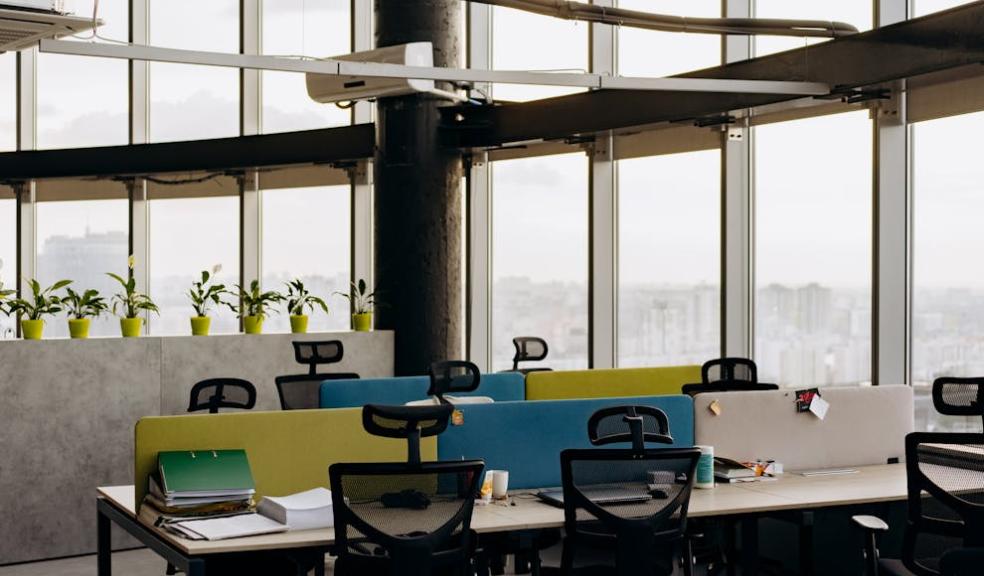
The Power of Office Design - Creating a Space That Inspires Creativity
It’s well documented that office design has a bearing on the productivity and creativity of the employees who work within it. For example, in 2019, Dell conducted a survey that found that ‘73 percent of UK office workers state that they’d consider leaving an employer if they failed to provide a suitable workplace environment that inspires them to fulfil their role.’ If that doesn’t signal to employers that office design matters, we don’t know what does.
In this article, we’ll be delving further into the importance of office design and suggesting ways in which it can be improved to inspire both creativity, and productivity.
The importance of office design
There are many ways that office design can influence an employee’s behaviour, mood, and productivity. For example, when acoustics haven’t been considered, an office space can become loud and distracting. Similarly, desks close to heating or air conditioning outlets may mean that extremes of temperature make for an uncomfortable environment to sit in - hardly conducive to a productive day.
To demonstrate how just a simple change to an office space based on a little bit of thought can increase productivity, research completed in 2014 by University of Exeter found that enriching a ‘lean’ office with plants could increase productivity by 15%.
Elements of a creative office design
So, what key elements of office design should be considered in order to encourage productivity and creativity? Good places to start include:
- Lighting: You’d be hard pushed to find anyone that doesn’t like to work in an environment where natural light is maximised; a light, bright office with adjustable lighting is ideal.
- Colour schemes: Every part of the office should have its colour scheme carefully thought through; the colours you choose for various ‘zones’ will differ depending on their purpose. For example, you may choose a bright, enlivening colour for a meeting room, but cool and neutral tones for a chill-out area.
- Furniture: Everyone needs to be comfortable, and there are plenty of ergonomic and flexible furniture options available - there is no excuse!
- Layout: The flow of an office really matters, and you’ll likely need a mixture of open spaces, private areas, collaborative zones, and quiet rooms.
The role of suspended ceiling tiles in office design
You can’t underestimate the power of a ceiling in office design, and suspended ceiling tiles offer aesthetic and functional benefits, as well as being cost effective.
Their benefits include:
Their aesthetic appeal: With a variety of designs and finishes available, it’s possible to enhance the office look in a way that transforms the space.
The ability to control the acoustics: The right ceiling tiles can reduce noise levels to create a more peaceful space in which to work.
The lighting integration possibilities: Ceiling tile grids allow for lighting integration, so you’re able to provide maximum light to the places within the room that need it.
Climate control: Ceiling tiles can assist with temperature regulation, as well as integrating with your heating and air con systems.
Practical tips for designing a creative office space
If you’re ready to get started on transforming your office space to promote creativity and productivity, here are some actionable tips for business owners and office managers to work through:
Involve employees
Guessing what your employees need is no good - different teams may want different things, and by consulting everyone, you’ll get a rounded picture of how you can best improve your office space to meet their needs and preferences.
Create flexible spaces
Particularly important for offices used by hybrid workers, consider creating multipurpose areas that can be adapted for different tasks.
Incorporate nature
As we suggested earlier, use plants and natural elements to improve air quality and add a touch of nature - greenery is so much nicer to look at than cold and corporate corners!
Allow personal touches
It might be something that we’ve gotten out of the habit of doing since COVID-19 saw a lot of us work remotely, but allowing for personalisation of workspaces can make employees feel more at home, and ready to be their most creative selves.
To conclude
The ways in which you adapt your office for creativity and productivity will vary depending on the people you employ, and the work that you do, but you can’t go wrong by consulting your team about what they need, and doing your best to ensure that everyone has a space in which to do their best work.









